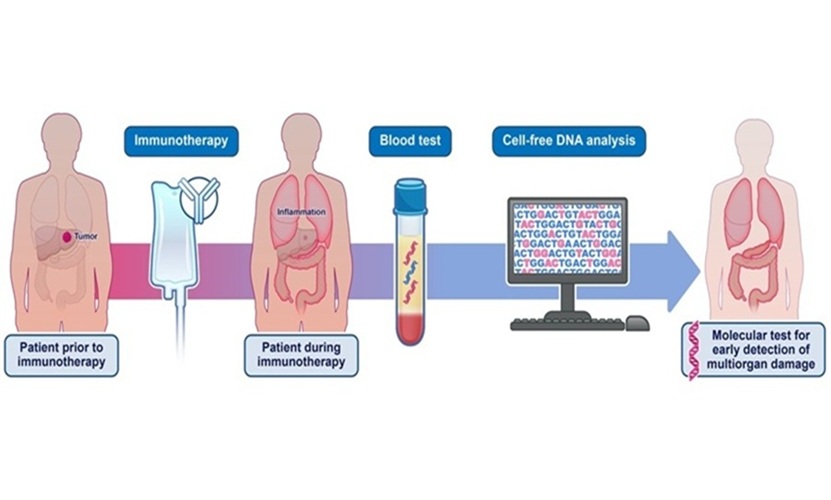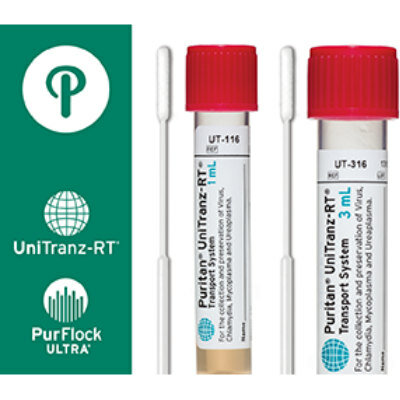Tiziana Life Sciences Accelerate Development of Potential Covid-19 Drug
|
By LabMedica International staff writers Posted on 14 Mar 2020 |

Illustration
Tiziana Life Sciences (London, UK), a biotechnology company focused on innovative therapeutics for inflammatory and autoimmune diseases, is expediting development of TZLS-501, a novel, fully human anti-interleukin-6 receptor (anti-IL6R) monoclonal antibody (mAb) for treatment of patients infected with coronavirus COVID-19 (SARS-CoV-2). Tiziana plans to administer TZLS-501 using a proprietary formulation technology. The company has entered into a world-wide license for composition-of-matter of TZLS-501, a fully human mAb targeting IL-6R, with Novimmune, SA, a Swiss biotechnology company in 2017.
Certain patients infected with coronavirus COVID-19 may develop an uncontrolled immune response ("cytokine storm"), resulting in severe damage to lung tissue which could lead to respiratory failure. Excessive production of IL-6 is regarded as a key driver of chronic inflammation and is believed to be associated with severe lung damage observed with COVID-19 infections and acute respiratory illness.
Early clinical studies conducted by doctors in China suggest that anti-IL6R mAbs may be used in clinical practice for treatment of COVID-19. Consequently, China's National Health Commission has recommended the use of Roche's blockbuster drug, Actemra® for treatment of patients infected with COVID-19, with serious lung damage and elevated IL-6 levels. Actemra was first approved by the FDA in 2010 for rheumatoid arthritis. Besides Actemra®, Sanofi and Regeneron are currently exploring Kevzara®, an FDA-approved anti-IL-6 receptor therapy for rheumatoid arthritis, for treatment of severe COVID-19.
A recent Chinese study also reported that COVID-19 infection caused clusters of severe respiratory illness such as severe acute respiratory distress syndrome (ARDS). The cytokine, IL-6, a major determinant in the priming of pathogenic T cells to produce an inflammatory response, binds to its receptor subunit IL-6Rα on the cell membrane. The receptor IL-6Rα can be shed in soluble form, sIL6Rα, which binds to circulating IL-6 cytokine in the blood. The downstream signaling from this complex mediates pro-inflammatory effects underlying inflammatory diseases such as rheumatoid arthritis (RA) and ARDS. The company believes that the features of TZLS-501 consisting of its dual mechanism of action to inhibit signaling by the membrane-bound and soluble IL-6 receptor and the rapid depletion of circulating IL-6 cytokines, a major cause of lung damage, provides TZLS-501 with distinct advantages for treatment of COVID-19.
"We believe that the features of TZLS-501 consisting of its dual mechanism of action to inhibit signaling by the membrane-bound and soluble IL-6 receptors along with rapid depletion of circulating IL-6 cytokine, a major cause of lung damage, provides TZLS-501 with distinct advantages for treatment of COVID-19 over other anti-IL-6R mAbs such as Actemra® and Kevzara® for treatment of COVID-19," said Dr. Kunwar Shailubhai, CEO & CSO of Tiziana Life Sciences. "The recent decision by researchers in China to add Actemra® to treatment guidelines for coronavirus patients with serious lung damage confirms the utility of anti-IL6R mAb. We are excited to move forward with our clinical development plan to expedite evaluation in patients as soon as possible."
Related Links:
Tiziana Life Sciences
Certain patients infected with coronavirus COVID-19 may develop an uncontrolled immune response ("cytokine storm"), resulting in severe damage to lung tissue which could lead to respiratory failure. Excessive production of IL-6 is regarded as a key driver of chronic inflammation and is believed to be associated with severe lung damage observed with COVID-19 infections and acute respiratory illness.
Early clinical studies conducted by doctors in China suggest that anti-IL6R mAbs may be used in clinical practice for treatment of COVID-19. Consequently, China's National Health Commission has recommended the use of Roche's blockbuster drug, Actemra® for treatment of patients infected with COVID-19, with serious lung damage and elevated IL-6 levels. Actemra was first approved by the FDA in 2010 for rheumatoid arthritis. Besides Actemra®, Sanofi and Regeneron are currently exploring Kevzara®, an FDA-approved anti-IL-6 receptor therapy for rheumatoid arthritis, for treatment of severe COVID-19.
A recent Chinese study also reported that COVID-19 infection caused clusters of severe respiratory illness such as severe acute respiratory distress syndrome (ARDS). The cytokine, IL-6, a major determinant in the priming of pathogenic T cells to produce an inflammatory response, binds to its receptor subunit IL-6Rα on the cell membrane. The receptor IL-6Rα can be shed in soluble form, sIL6Rα, which binds to circulating IL-6 cytokine in the blood. The downstream signaling from this complex mediates pro-inflammatory effects underlying inflammatory diseases such as rheumatoid arthritis (RA) and ARDS. The company believes that the features of TZLS-501 consisting of its dual mechanism of action to inhibit signaling by the membrane-bound and soluble IL-6 receptor and the rapid depletion of circulating IL-6 cytokines, a major cause of lung damage, provides TZLS-501 with distinct advantages for treatment of COVID-19.
"We believe that the features of TZLS-501 consisting of its dual mechanism of action to inhibit signaling by the membrane-bound and soluble IL-6 receptors along with rapid depletion of circulating IL-6 cytokine, a major cause of lung damage, provides TZLS-501 with distinct advantages for treatment of COVID-19 over other anti-IL-6R mAbs such as Actemra® and Kevzara® for treatment of COVID-19," said Dr. Kunwar Shailubhai, CEO & CSO of Tiziana Life Sciences. "The recent decision by researchers in China to add Actemra® to treatment guidelines for coronavirus patients with serious lung damage confirms the utility of anti-IL6R mAb. We are excited to move forward with our clinical development plan to expedite evaluation in patients as soon as possible."
Related Links:
Tiziana Life Sciences
Latest COVID-19 News
- New Immunosensor Paves Way to Rapid POC Testing for COVID-19 and Emerging Infectious Diseases
- Long COVID Etiologies Found in Acute Infection Blood Samples
- Novel Device Detects COVID-19 Antibodies in Five Minutes
- CRISPR-Powered COVID-19 Test Detects SARS-CoV-2 in 30 Minutes Using Gene Scissors
- Gut Microbiome Dysbiosis Linked to COVID-19
- Novel SARS CoV-2 Rapid Antigen Test Validated for Diagnostic Accuracy
- New COVID + Flu + R.S.V. Test to Help Prepare for `Tripledemic`
- AI Takes Guesswork Out Of Lateral Flow Testing
- Fastest Ever SARS-CoV-2 Antigen Test Designed for Non-Invasive COVID-19 Testing in Any Setting
- Rapid Antigen Tests Detect Omicron, Delta SARS-CoV-2 Variants
- Health Care Professionals Showed Increased Interest in POC Technologies During Pandemic, Finds Study
- Set Up Reserve Lab Capacity Now for Faster Response to Next Pandemic, Say Researchers
- Blood Test Performed During Initial Infection Predicts Long COVID Risk
- Low-Cost COVID-19 Testing Platform Combines Sensitivity of PCR and Speed of Antigen Tests
- Finger-Prick Blood Test Identifies Immunity to COVID-19
- Quick Test Kit Determines Immunity Against COVID-19 and Its Variants
Channels
Clinical Chemistry
view channel
Online Tool Detects Drug Exposure Directly from Patient Samples
Doctors often rely on patient interviews and medical records to determine what medications a person has taken, but this information is frequently incomplete. People may forget drugs they used, take over-the-counter... Read more
Chemical Imaging Probe Could Track and Treat Prostate Cancer
Prostate cancer remains a leading cause of illness and death among men, with many patients eventually developing resistance to standard hormone-blocking therapies. These drugs often lose effectiveness... Read moreMolecular Diagnostics
view channel
CLIA Test Identifies Head and Neck Cancer Recurrence from Post-Surgical Lymphatic Fluid
While the lymphatic system’s critical role in metastasis has long been recognized, routine access to patient lymph has been elusive. Now, a non-invasive process can access lymph through the collection... Read more
New 15-Minute Hepatitis C Test Paves Way for Same-Day Treatment
Chronic hepatitis C infection affects an estimated 50 million people worldwide and causes around 242,000 deaths each year, largely due to cirrhosis and liver cancer. Although the infection is curable with... Read moreHematology
view channel
MRD Tests Could Predict Survival in Leukemia Patients
Acute myeloid leukemia is an aggressive blood cancer that disrupts normal blood cell production and often relapses even after intensive treatment. Clinicians currently lack early, reliable markers to predict... Read more
Platelet Activity Blood Test in Middle Age Could Identify Early Alzheimer’s Risk
Early detection of Alzheimer’s disease remains one of the biggest unmet needs in neurology, particularly because the biological changes underlying the disorder begin decades before memory symptoms appear.... Read more
Microvesicles Measurement Could Detect Vascular Injury in Sickle Cell Disease Patients
Assessing disease severity in sickle cell disease (SCD) remains challenging, especially when trying to predict hemolysis, vascular injury, and risk of complications such as vaso-occlusive crises.... Read more
ADLM’s New Coagulation Testing Guidance to Improve Care for Patients on Blood Thinners
Direct oral anticoagulants (DOACs) are one of the most common types of blood thinners. Patients take them to prevent a host of complications that could arise from blood clotting, including stroke, deep... Read moreImmunology
view channel
Blood Test Could Detect Adverse Immunotherapy Effects
Immune checkpoint inhibitors have transformed cancer treatment, but they can also trigger serious immune-related adverse events that damage healthy organs and may become life-threatening if not detected early.... Read more
Routine Blood Test Can Predict Who Benefits Most from CAR T-Cell Therapy
CAR T-cell therapy has transformed treatment for patients with relapsed or treatment-resistant non-Hodgkin lymphoma, but many patients eventually relapse despite an initial response. Clinicians currently... Read moreMicrobiology
view channel
Blood-Based Diagnostic Method Could Identify Pediatric LRTIs
Lower-respiratory tract infections (LRTIs) are a leading cause of illness and death worldwide, and pneumonia is the leading infectious cause of death in children under five, claiming the lives of over... Read more
Rapid Diagnostic Test Matches Gold Standard for Sepsis Detection
Sepsis kills 11 million people worldwide every year and generates massive healthcare costs. In the USA and Europe alone, sepsis accounts for USD 100 billion in annual hospitalization expenses.... Read moreRapid POC Tuberculosis Test Provides Results Within 15 Minutes
Tuberculosis remains one of the world’s deadliest infectious diseases, and reducing new cases depends on identifying individuals with latent infection before it progresses. Current diagnostic tools often... Read more
Rapid Assay Identifies Bloodstream Infection Pathogens Directly from Patient Samples
Bloodstream infections in sepsis progress quickly and demand rapid, precise diagnosis. Current blood-culture methods often take one to five days to identify the pathogen, leaving clinicians to treat blindly... Read morePathology
view channel
Rapid Low-Cost Tests Can Prevent Child Deaths from Contaminated Medicinal Syrups
Medicinal syrups contaminated with toxic chemicals have caused the deaths of hundreds of children worldwide, exposing a critical gap in how these products are tested before reaching patients.... Read more
Tumor Signals in Saliva and Blood Enable Non-Invasive Monitoring of Head and Neck Cancer
Head and neck cancers are among the most aggressive malignancies worldwide, with nearly 900,000 new cases diagnosed each year. Monitoring these cancers for recurrence or relapse typically relies on tissue... Read more
Common Health Issues Can Influence New Blood Tests for Alzheimer’s Disease
Blood-based tests for Alzheimer’s disease are transforming diagnosis by offering a simpler alternative to spinal taps and brain imaging. However, many people evaluated at memory clinics also live with... Read more
Blood Test Formula Identifies Chronic Liver Disease Patients with Higher Cancer Risk
Chronic liver disease affects millions worldwide and can progress silently to hepatocellular carcinoma (HCC), one of the deadliest cancers globally. While surveillance guidelines exist for patients with... Read moreTechnology
view channel
Machine Learning Models Diagnose ALS Earlier Through Blood Biomarkers
Amyotrophic lateral sclerosis (ALS) is a rapidly progressive neurodegenerative disease that is notoriously difficult to diagnose in its early stages. Early symptoms often overlap with other neurological... Read more
Artificial Intelligence Model Could Accelerate Rare Disease Diagnosis
Identifying which genetic variants actually cause disease remains one of the biggest challenges in genomic medicine. Each person carries tens of thousands of DNA changes, yet only a few meaningfully alter... Read moreIndustry
view channel
BD and Penn Institute Collaborate to Advance Immunotherapy through Flow Cytometry
BD (Becton, Dickinson and Company, Franklin Lakes, NJ, USA) has entered into a strategic collaboration with the Institute for Immunology and Immune Health (I3H, Philadelphia, PA, USA) at the University... Read more






















